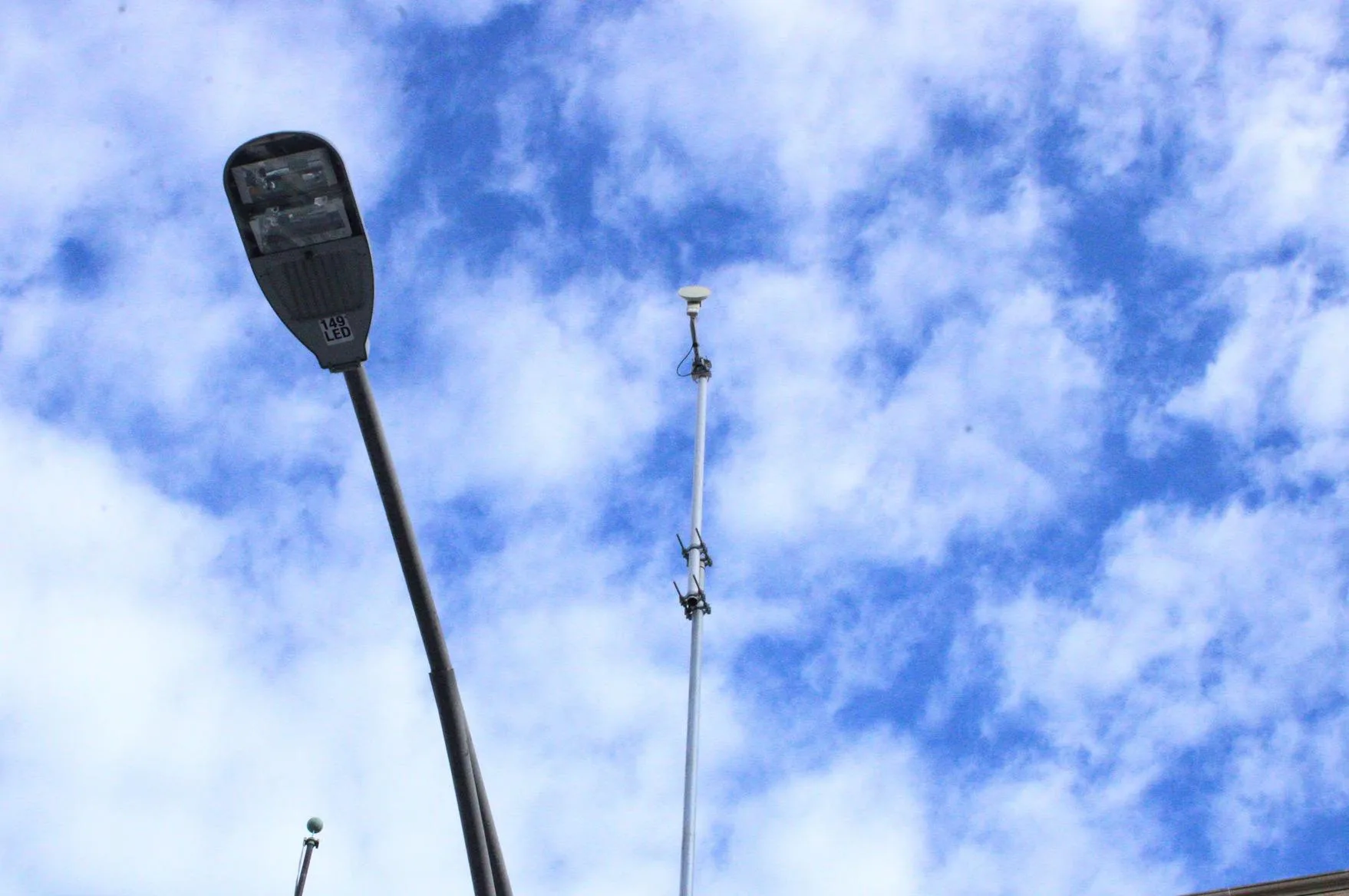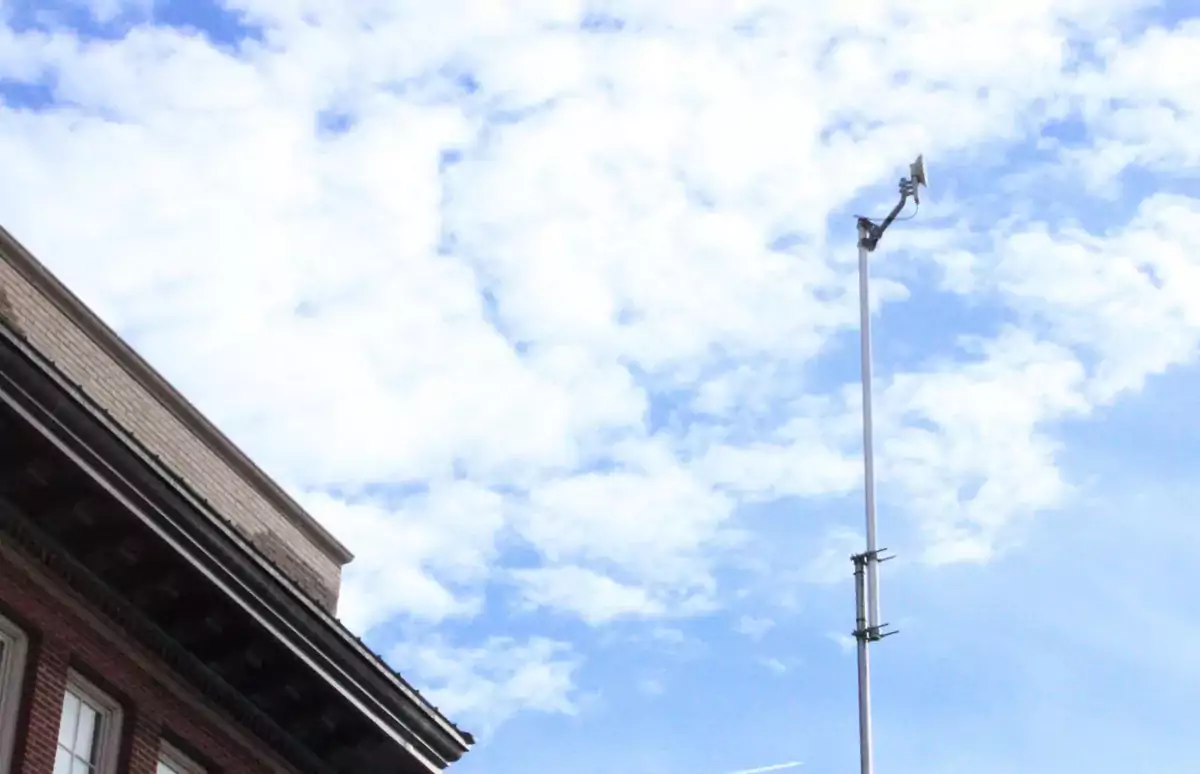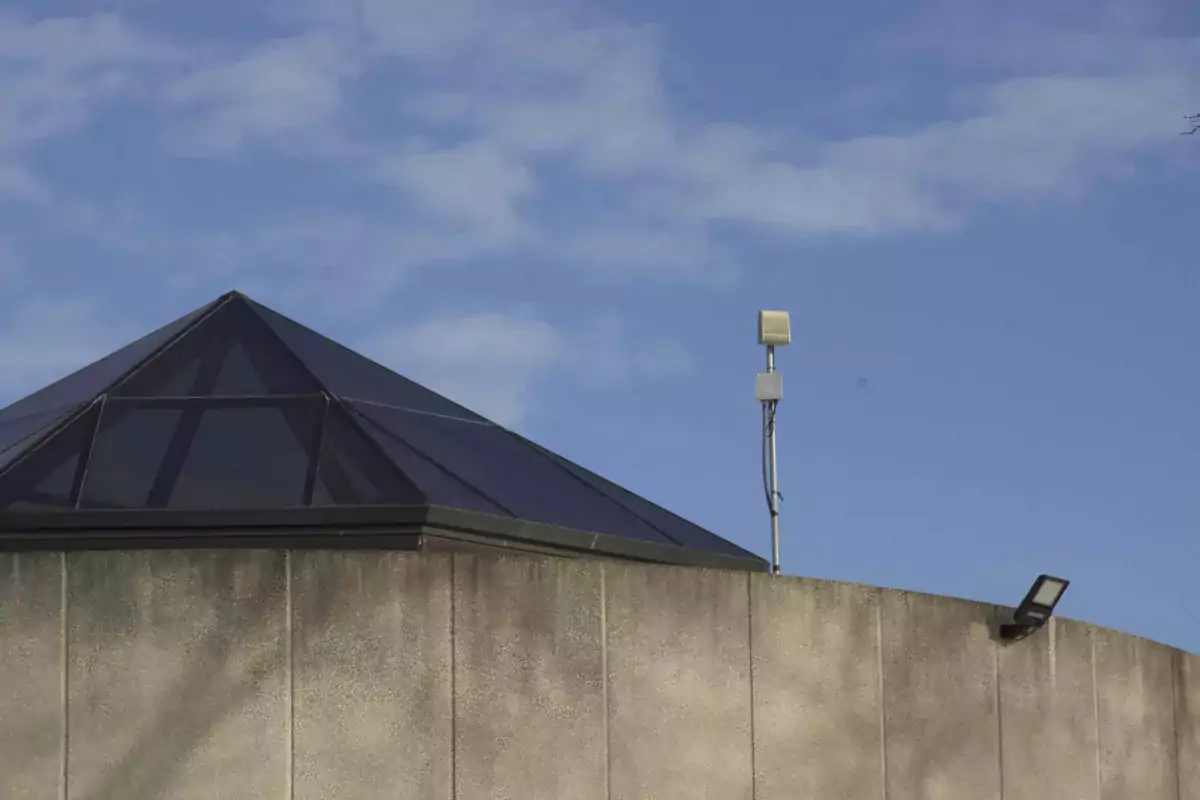In Chicago, ShotSpotter Failed to Detect Hundreds of Shootings
The department reported misses more than 550 times in 2023, and a public safety director complained about a 55-round miss in 2022.

This story was originally published by South Side Weekly.
Key Takeaways
- In December 2022, ShotSpotter sensors in Chicago failed to detect a shooting in which 55 rounds were fired and two men were wounded.
- Between Jan. 1 and Dec. 18, 2023, Chicago police emailed ShotSpotter 575 times to report gunfire the department said sensors missed.
- During his campaign, Mayor Brandon Johnson pledged to cancel the city’s contract with ShotSpotter, which expires on Feb. 16.
- A ShotSpotter spokesperson declined to provide comment for this story.
A South Side Weekly investigation has gotten the first-ever look at how CPD reports missed gunfire to ShotSpotter, the gunshot-detection company that was recently renamed SoundThinking, as well as a glimpse of how the company responded to its sensors missing a fifty-five round shooting in December 2022 that wounded two men.
According to internal company emails reviewed by the Weekly, the shooting, one of more than forty CPD reported to ShotSpotter that month, prompted Dan Casey, the Office of Public Safety Administration’s managing deputy director of public safety IT, to demand an explanation.
“I got my head handed to me yesterday by Dan Casey,” wrote Gary Bunyard, ShotSpotter’s vice president of public safety solutions, in an email to other senior employees. “This incident involved a high-profile shooting with ‘55’ rounds. And, we missed it! …I am a big boy—I can deal with Dan. However, I owe Dan some explanation! Obviously, I cannot tell him that we have a bunch of down sensors in that area and insufficient resources to service our largest customer.”
Bunyard added that Casey would want to know how long the sensors would be down and when they’d be fixed. “I can plead ignorance on the first question, but he is not going to let me get away without answering the second question. Anything you can arm me with would be greatly appreciated.”
Casey told the Weekly he did not specifically recall the December 2022 incident. “We should hold our vendors accountable and it sounds like I was working on that,” he added. “I certainly would hold our vendors very much accountable.”
Other internal emails show ShotSpotter executives also discussed challenges hiring enough staff for the company’s Chicago coverage area and were repeatedly warned about electrical code violations by a local contractor. A ShotSpotter spokesperson declined to provide comment for this story.
ShotSpotter’s sensors detect loud noises that a computer algorithm analyzes to determine whether they’re gunshots. In January 2023, the Associated Press reported that an internal document revealed human technicians “are given broad discretion” to determine whether noises are gunfire and can overrule the algorithm’s classifications.
In 2018, then-Mayor Rahm Emanuel inked a three-year $33 million contract with ShotSpotter. By May 2021, there were sensors in twelve police districts on the South and West Sides. Former Mayor Lori Lightfoot extended the contract twice, most recently in October 2022. During his campaign, Mayor Brandon Johnson pledged to cancel the contract, and dozens of community organizations have signed a letter urging the mayor to keep that promise. The current extension expires on Feb. 16. Johnson has repeatedly said he will wait until then to announce a decision.
Proponents of the gunshot-detection technology argue that its value lies in its ability to quickly dispatch police to shootings, where they can potentially save the lives of gunshot victims, particularly in cases where no one calls 9-1-1. In a response to a 2021 report by the Inspector General (OIG) that found fewer than 10% of alerts were linked to documented evidence of a gun-related crime, ShotSpotter’s CEO wrote that during the same seventeen-month period the OIG analyzed, ShotSpotter alerts “led authorities to 1,131 crime scenes where at least one gunshot wound victim was found” in Chicago.
Last week, Block Club reported that CPD superintendent Larry Snelling reiterated his support for ShotSpotter at a January 24 community meeting in Chinatown. “Because of this technology, officers have been able to get to scenes quicker,” Snelling said at the meeting.
A “Big Miss”
On December 12, 2022, two months after then-Mayor Lightfoot quietly extended ShotSpotter’s contract, two young men were waiting for food at Super Star And Gyros in Back of the Yards. Someone outside started shooting at the restaurant, riddling its windows with dozens of bullet holes and leaving both men wounded. They drove to a nearby firehouse and were taken to separate hospitals for treatment.
The following day, Bunyard, ShotSpotter’s senior vice president of public safety solutions, emailed several other senior employees.
“I stepped into a buzz saw this afternoon with Dan,” Bunyard wrote, referring again to Casey, OPSA’s information technology director. “He indicated that we had [a] ‘Big Miss’ yesterday—his words. He said it was 55 rounds and we failed to alert, but had audio.”
Bunyard needed to explain how ShotSpotter’s system failed to detect so many rounds in a single incident.
“We have three OOS [out of service] locations in that area that all would have been helpful and likely would have made this into a successful detection,” Charlie Knust, a senior director for customer support and training, replied to Bunyard.
John Fountain, who was ShotSpotter’s director of network and field operations until last month, replied to the email thread to say: “Looking at the current array status, we have a single down sensor to the northeast of the incident,” adding that there was an open work order for it. “There are two locations to the south where we’ve lost working sensors.”
A separate issue from the two out-of-service sensors was ambient noise in the area, Fountain continued. “There are more than a few performance compromised sensors in that region due to excessive [decibel] levels. This is why we need a PM [project manager] involved to assess the design and see what modifications can be made to address the performance issues.”
The gyro shop is on the southeast corner of 47th and Racine. Just across that intersection is the entrance to Stockyards Industrial Park, a sprawling site that hosts manufacturing, packing, and distribution businesses. The park is serviced by railroads and trucking routes.
A Weekly reporter found one of the ShotSpotter sensors Fountain referenced two blocks south of Super Star And Gyros, on the roof of a building that is close to truckyards on two sides. Another is on a utility pole in front of a neighborhood school nearly half a mile west of 47th and Racine. Both are clearly visible from the sidewalk. A third sensor was found on a stoplight at 43rd and Halsted, a little more than a mile northeast of the gyro shop, but we could not confirm if it was the one Fountain had said was down.

The internal ShotSpotter emails show that following the December 2022 “Big Miss,” the ShotSpotter team did not have a definite timeline for when they’d get the three nearby out-of-service sensors replaced. The challenges included a lack of staffing and potential delays in getting permission from building owners.
“We have this in the highest place to get new permissions, but until we have a resource (The associate PM we are trying to hire) for enhancing current arrays, we do not have the ability to search for new permissions due to the load of new installs,” Knust wrote.
“I know Dan will want a specific date, but we simply do not have one,” Regan Davis, senior vice president of customer success and field engineering wrote to Bunyard. Davis and another ShotSpotter employee both highlighted the need to hire a Chicago project manager. Without one, executives wrote that it would be difficult to find enough technicians to fix downed sensors or to get permission from building owners to install new ones.
“I would set an expectation that this will take at least a month since we need to secure new permissions, ship equipment and line up installers,” Davis added. “With the holidays around the corner, we likely will struggle to connect with people to secure the permissions.”
Getting permission from private building owners for installs or repairs, which another ShotSpotter vice president called “the wildcard” in an internal email, was one of several operational challenges executives discussed. Staffing was another. Scheduling sensor repairs and installations could take weeks or months as a result, according to the internal emails.
In some instances, ShotSpotter asks CPD to have police officers escort electricians on service calls. A spokesperson for the department referred questions about police escorts for ShotSpotter contractors, including about whether the department or the company shoulders the cost of such deployments, to the Mayor’s Office, which did not respond.
In the email thread following the “Big Miss,” Fountain, the former director of network and field operations, replied to Davis to say that the company would be interviewing a candidate for the associate project manager position the following day.
“Extremely dangerous code violations”
According to emails reviewed by the Weekly, a licensed electrical contractor from Chicago who formerly worked for ShotSpotter repeatedly alerted company management to code violations and other issues around sensor installations in the month leading up to and the one after the 55-round missed shooting.
“Better hope the electrical inspector doesn’t see this,” began one email the contractor sent to ShotSpotter. Another, dated Nov. 14, 2022, had the subject line “Extremely dangerous code violations,” and concluded with, “Why we desperately need quality control.”
A ShotSpotter field service lead wrote back. “As we continue to roll trucks in locations that have been neglected over 2–3 yrs. It’s revealing the quality of work that will need to be addressed,” the email read. “As the company grows, standards will follow. Be a part of the positive change.”
On January 24, 2023, the electrician emailed ShotSpotter again. “Code violations: Vendors must use bubble covers for exterior receptacles to protect the wires,” he wrote. “This is a service call waiting to happen.”
In an email sent to ShotSpotter executives in February 2023 with the subject line “Code violations,” he wrote: “Vendors should never splice 22-gauge low voltage wires into ComEd high voltage wires. On apartment buildings, power should always come from the buildings public circuit.” A photo of the wires was attached.
The Chicago Electrical Code (CEC) requires a license for anyone performing electrical work on buildings. The CEC has an exception in its licensing requirements for work done on utility poles like the ones some ShotSpotter sensors are installed on. A Department of Transportation (CDOT) spokesperson said she was unable to determine by press time whether the exception includes installing ShotSpotter devices on utility poles or ComEd wires.
Internal ShotSpotter emails show that when the Chicago-based contractor was not available, the company brought an electrician based near Flint, Mich. A search of active and inactive electrical contractor licenses on the Department of Buildings’ website did not turn up that contractor’s name. Contacted by the Weekly, he declined to discuss ShotSpotter, citing a non-disclosure agreement. He confirmed he has done work in Chicago and said he hadn’t installed any sensors on buildings. Then he ended the call.
In the email exchange about the fifty-five missed shots in December 2022, a senior manager of network and field operations wrote: “Dependent on what type of location (building or pole) we secure as replacement may have a slight influence on who we utilize to complete an install,” adding that replacing the downed sensors near the miss was the priority.
An email sent to Fountain and other executives on Feb. 2, 2023, by ShotSpotter project manager Greg Green included a photo of ShotSpotter sensors affixed to a light pole on the South Side. “We are in violation of [a] CDOT request not to use power taps in the Power Nodes on their light heads because this violates their warranty,” Green wrote. “Can we send someone back out to address immediately.” A Weekly reporter visited the ShotSpotter installation referenced in Green’s email on Jan. 20. The power line connecting to the light head was no longer there, appearing to indicate the problem had been repaired.
An email exchange the Weekly obtained from CDOT via FOIA request shows that in July 2023, four months after Green emailed executives warning them against using power nodes on street lights, ShotSpotter consultant submitted plans to CDOT for installations along the Dan Ryan expressway that would have used street lights for power. “The installs are the same as other previous ShotSpotter installs on CDOT polls,” the consultant wrote.
After being told by a CDOT official that tapping into CDOT poles for power was not allowed, the consultant replied that she had been “given incorrect information” and ShotSpotter would instead use solar power for the Dan Ryan sensors.
Hundreds of missed shootings
ShotSpotter sensors are in twelve police districts on the South and West Sides that make up a coverage area of 117 square miles. According to a 2017 ShotSpotter FAQ sheet, sensors are “strategically placed in an array of 15-20 sensors per square mile,” suggesting at least 2,000 sensors blanket half the city.
In November, Weekly reporters canvassed the 2nd (Wentworth) Police District to find sensors that are clearly visible from the street level. Many are small circular devices prominently located atop streetlights and utility poles, while others are on CTA bus shelters, public schools, gas stations, churches, hospitals, and apartment complexes. Rooftop sensors are oblong white devices affixed to poles. Below them, square metal boxes are emblazoned with a 1-866 service number that connects to a voicemail for SoundThinking, ShotSpotter’s rebranded nomenclature.

Sensors are installed on the rooftops of prominent institutions such as the DuSable Museum of African American History in Washington Park and the headquarters of Rev. Jesse Jackson’s Rainbow PUSH Coalition in Kenwood. A spokesperson for the DuSable said the museum’s leadership was aware of the sensor but that its installation predated the current administration (Perry Irmer has been president of the museum since 2015). Rainbow PUSH did not return requests for comment.
They can also be seen atop buildings scattered across the University of Chicago’s expansive Hyde Park campus; a spokesperson said the university granted the city’s request to install sensors in 2018, adding that the U of C police force has access to ShotSpotter gunshot reports.
ShotSpotter’s contract requires the company to detect 90% of unsuppressed outdoor shootings above a .25 caliber within the twelve police districts included in its coverage area. The contract also requires CPD to report verified incidents of gunfire that the department didn’t get an alert for. The Weekly submitted a FOIA request to CPD for all missed gunfire incidents reported to ShotSpotter by the department, which it is required to do under the terms of the contract, from December 1, 2022 to December 18, 2023 (the date of the FOIA).
In response to our request, the department provided email metadata (including subject, sender, and date) that shows CPD personnel emailed ShotSpotter about missed gunfire forty-one times the month of the “Big Miss.” Between January 1 and December 18, 2023, CPD emailed ShotSpotter 575 times to report gunfire the department said sensors missed, according to the metadata.
An analysis of data on the city’s Violence Reduction Dashboard indicates the number of reported misses is equivalent to less than 10% of outdoor shootings reported in 2023 and December 2022 in police districts in the coverage area, suggesting the company is fulfilling the 90% clause in its contract.
The Weekly sent ShotSpotter detailed questions about the internal emails we reviewed, as well as potential code violations, repair timelines, missed gunfire including the fifty-five round shooting, and the company’s Chicago and national sensor networks. A spokesperson for the company declined to comment.
